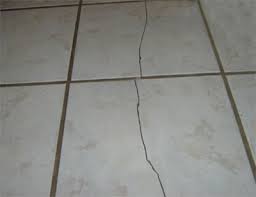Three Little Fixes You Can Make When Prepping A Home for Sale
 For Sale (Almost) Homeowners make a lot of memories in their houses, and there’s no doubt it’s emotional for them to say goodbye to their well-loved kitchens and family rooms when they put their homes on the market. Unfortunately, potential buyers will not be charmed by that “lived-in look.” they will only see details that need TLC…ASAP.
For Sale (Almost) Homeowners make a lot of memories in their houses, and there’s no doubt it’s emotional for them to say goodbye to their well-loved kitchens and family rooms when they put their homes on the market. Unfortunately, potential buyers will not be charmed by that “lived-in look.” they will only see details that need TLC…ASAP.
Here are a few simple DIY projects that a seller can do. These little fixes will rejuvenate some common trouble areas and make homes more appealing to fussy buyers
Busted tiles are not classy. Oops. Did an anvil drop on that tile countertop? Tile holds up almost indefinitely to all kinds of wear-but sadly, as you may have seen in your years on the job, tile cracks if something heavy is dropped on it. What your clients can do It’s relatively simple to replace broken tile: remove the grout, mask the surrounding tiles with tape, loosen the tile, chisel out the pieces, set the new tile, fill the perimeter with new grout and allow the grout to dry. Goodbye, shabby tile.
Scratches and dings and gouges, oh my! We know your client’s brother-in-law didn’t mean to run into the built-in bookshelves drawer with the recliner. While a droll family memory, it’s a distraction to a prospective home buyer, so it’s probably best the seller get rid of any and all visible scratches, dings and gouges. What your clients can do Minor scratches can be wiped clean with mineral oil, lightly sanded with fine grade sandpaper and sealed with polyurethane. Scratches that penetrate the finish can be filled with a like-colored furniture repair stick. The product consists of wax and putty, and is easy to apply. Follow with a coat of polyurethane. Not quite a gouge, but deeper than a scratch? Use wood putty in a matching color. Gouges also can be treated with wood putty. Make the repair, let it dry and apply the polyurethane.
Counter intelligence? Bags of groceries, stubborn food stains and the occasional misfire with a kitchen knife are all to blame for clients’ laminate or Corian counter surfaces looking scuffed and sad. Fortunately, there are simple solutions that won’t leave home sellers with an empty wallet. What your clients can do Laminate is a repair-friendly surface: a color-matched repair pen or paste will camouflage most scratches. Be careful not to overfill, and gently sand the excess when dry. The remnants of past meals can be removed using a paste made from baking soda and water. Leave the paste for a few hours and wipe away. No need to rub or scrub. Minor scratches on Corian can be treated by using a mild abrasive liquid cleaner on a damp sponge, rubbing over the scratch in small, overlapping circular motions, and rinsing with clean water. Encourage clients to wipe the surface completely dry, and repeat if the blemish is still visible. Deeper scratches should be treated following the manufacturer’s instructions.
That was easy, wasn’t it? With a little elbow grease and a modest investment of time and money, a seller can bring life back to worn surfaces.



